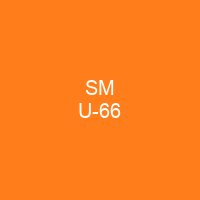SM U-66: A Dive into the Depths of World War I
Imagine a world where submarines were not just tools for warfare, but titans of the deep, capable of sinking entire fleets with a single torpedo. That was the era of SM U-66, the lead ship of the Type U-66 submarines for the Imperial German Navy during World War I.
SM U-66’s journey began as U-7, laid down on November 1, 1913, but its construction was delayed due to the onset of World War I. In November 1914, it was sold to the German Navy and renumbered as SM U-66. Launched on April 22, 1915, and commissioned under Kapitänleutnant Thorwald von Bothmer, this submarine was destined for a life of intrigue and peril.
From Baltic Flotilla to the First British Offensive
Was SM U-66 just another ship in the vast ocean of World War I, or did it have a special mission?
Assigned to the Baltic Flotilla, U-66 saw its first action during the first British submarine offensive in September 1915. It was part of a convoy, towing behind a host ship with a telephone line, ready to attack any enemy submarines that dared to surface.
The Second Submarine Offensive and Beyond
Could U-66 have predicted the impact it would make on the war’s outcome?
In January 1916, U-66 joined the IV Flotilla and participated in Germany’s second submarine offensive. Over six days in April 1916, she sank nine ships, including the largest to that time, Margam Abbey. These actions were part of a broader strategy aimed at disrupting Allied supply lines.
Strategic Ambushes and Battles
How did U-66’s role in strategic ambushes shape its legacy?
In May 1916, during an unsuccessful scouting mission off the Firth of Forth, U-66 sent out a wireless report but was unable to make any attacks. Later that month, it participated in another failed ambush near Sunderland, where it fired torpedoes at the British cruiser Falmouth, scoring hits before being damaged itself.
Continued Operations and Final Patrol
Was U-66’s final patrol a fitting end to its storied career?
U-66 continued its operations, sinking several ships including the Norwegian steamer Gurre, the Swedish sailing ship Palander, and numerous others. On September 3, 1917, during her seventh and final patrol, U-66 was lost with all hands.
The Legacy of SM U-66
Over six successful patrols, SM U-66 had sunk 25 ships and seized a 26th as a prize for a combined total tonnage of 74,852. Its legacy is one of strategic importance and tactical prowess in the tumultuous waters of World War I.
SM U-66’s story serves as a reminder of the pivotal role submarines played during that era, shaping not just naval warfare but also the course of history itself.
SM U-66’s journey from a simple submarine design to a formidable weapon of war is a testament to the ingenuity and determination of its crew. Its legacy lives on, a silent reminder of the deep-sea battles that shaped the world we know today.
You want to know more about SM U-66?
This page is based on the article SM U-66 published in Wikipedia (retrieved on November 29, 2024) and was automatically summarized using artificial intelligence.








